Despite the warm temperatures, the sea breeze blowing off the gulf made the morning boat ride a little cool. Across the tidal flats, water receding from the falling tide reveals rugged-topped oyster beds and the twisted and gnarled roots of mangrove trees. The trees harbor a special membrane that allows them to sip brackish water to survive. Through reverse osmosis at a cellular level, saltwater is separated from fresh water and allows these trees to live in a seemingly inhospitable environment. Collectively, this area is called the 10,000 Island region of the Everglades National Park. This smattering of mangrove islands creates a habitat for transitory wildlife who use this area for rest and sustenance while they migrate through or overwinter the area.
Here, we ride around in a Carolina skiff in search of wildlife in which to photograph. On this leg of the Birds and Wildlife of the Everglades trip, we make a trip of boat rides to the same area on multiple occasions to ensure that we see all iterations of wildlife in this area of southern Florida. In all, we never have to wait to find wildlife long. Before we even leave the tiny harbor from which the boat is launched, we see dolphins cavorting about in the water across the waterway. 
Throughout the boat rides, we get close encounters with feeding osprey, bald eagles, pelicans, royal terns, and a whole host of other birds. One of the fun things about this trip is keeping an account of the sheer number of species we’ll encounter.
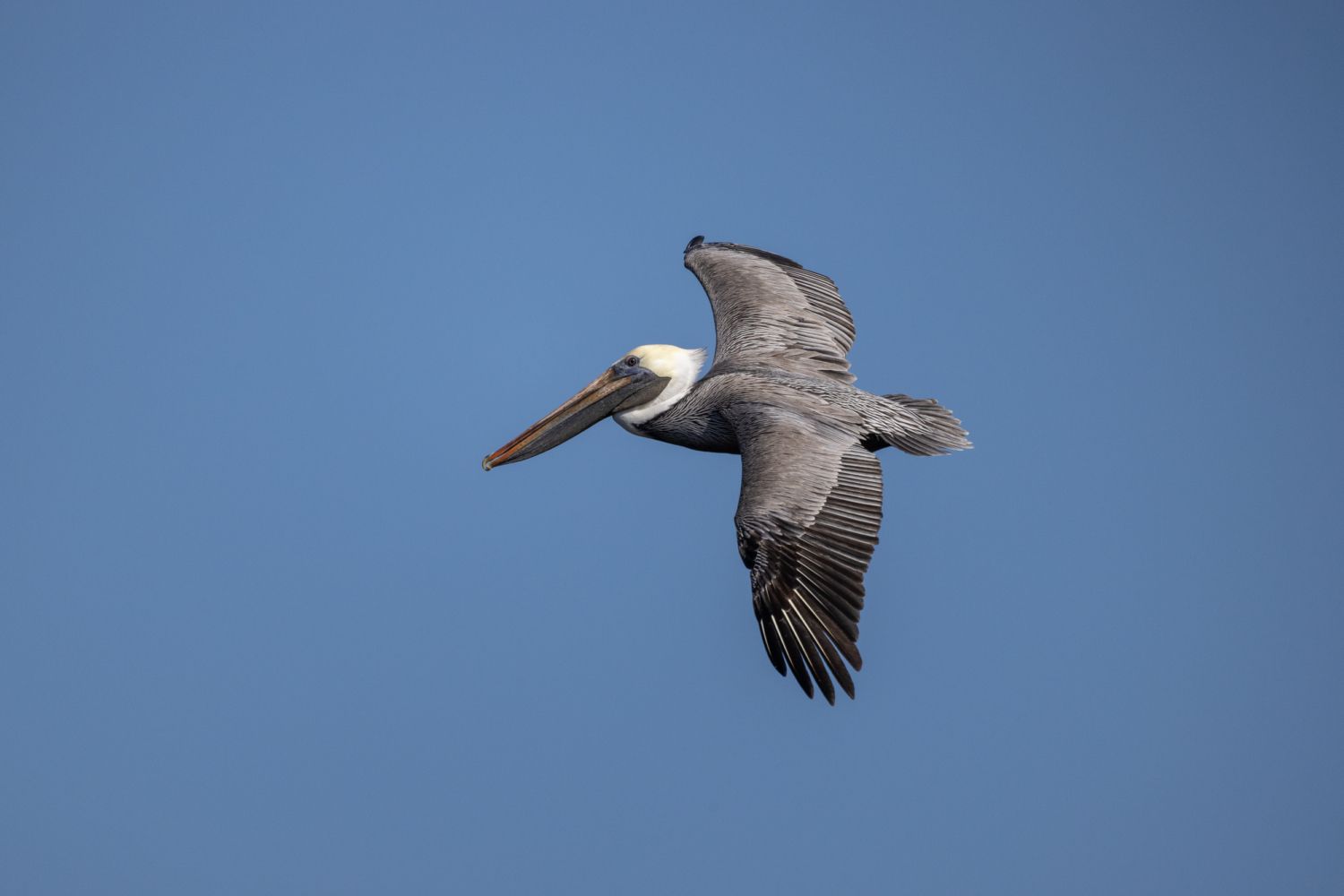
The rules of the game are pretty simple: if you can take a reasonably good picture of an animal where it is readily identifiable, then it counts as a species towards the final tally. The photo doesn’t have to be magazine cover worthy, it just has to be a photo that can be identified.
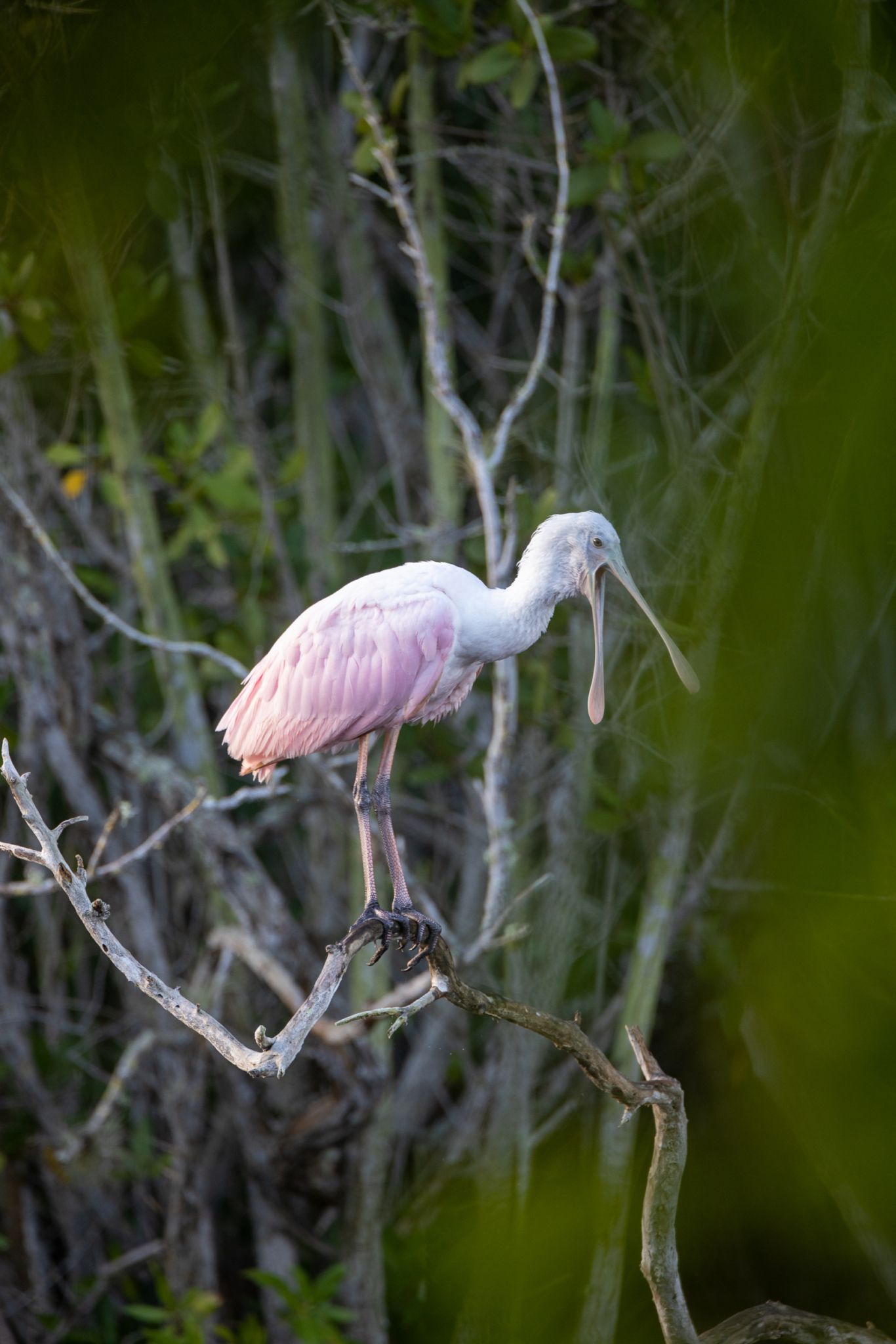
With the rules of the game in place, we all work hard to try to add new species to our master list. On most departures, it’s easy for the group to photograph more than sixty species of wildlife. That number speaks to the variety and photographability of the wildlife on this trip. The locations we’ve curated are full of birds and animals that are endemic to one of the most unique ecosystems in North America.
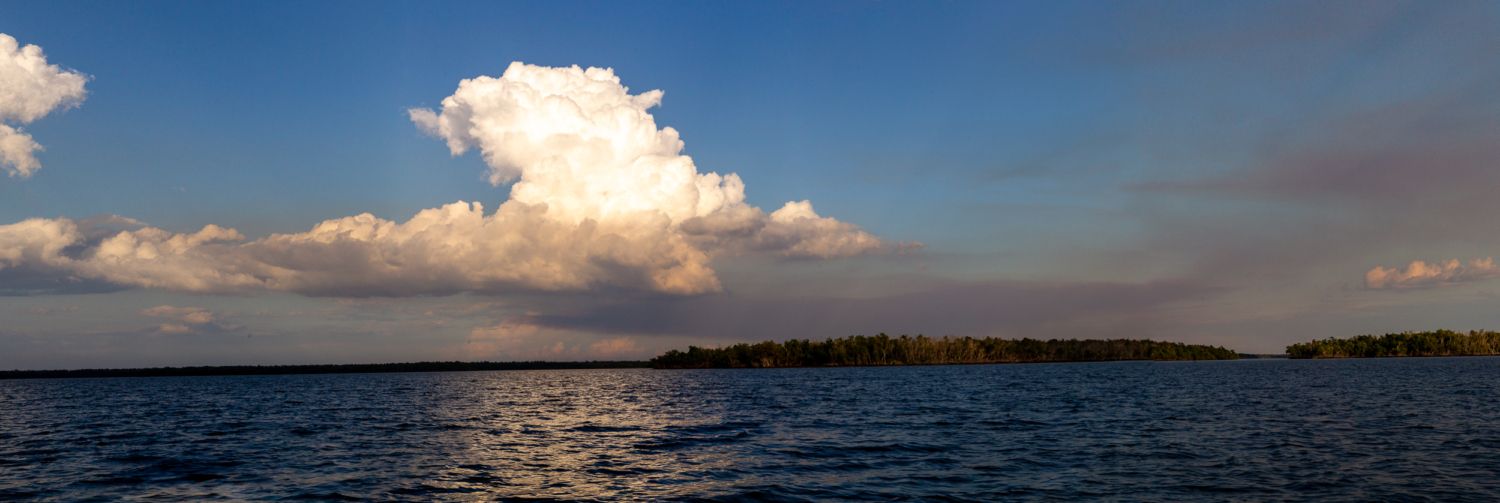
While it’s popularly known as a swamp, the Everglades complex is a big river that flows from Lake Okeechobee in the north. The overflow water from the lake and the ensuing rains that fall in between slowly makes its way through the flatlands of southern Florida. Underpinned by an enormous slab of limestone (the fossilized remnant of an ancient seabed), the water is clear, clean, and shallow as it slowly moves through sawgrass and cypress flats. Each seam, crease, and rise of the land create a change in elevation that exerts its influence on the hyper-local plant community. Whenever the plant community deviates from one location to the next, the animals that inhabit that plant community change. As such, the Everglades is full of micro-habitats in which year-round and migratory animals thrive.

The names of the birds and animals we photograph are like a study in biological texts. Green heron, catbird, alligator, Inca dove, and wood stork are just a small smattering of wildlife we document. On the first morning of the trip at the Ding Darling National Wildlife Refuge, we see more than twenty species before lunch. Many of the birds are common like an anhinga or white ibis but a few are a little more exotic like the colorful roseate spoonbill or the animated reddish egret.
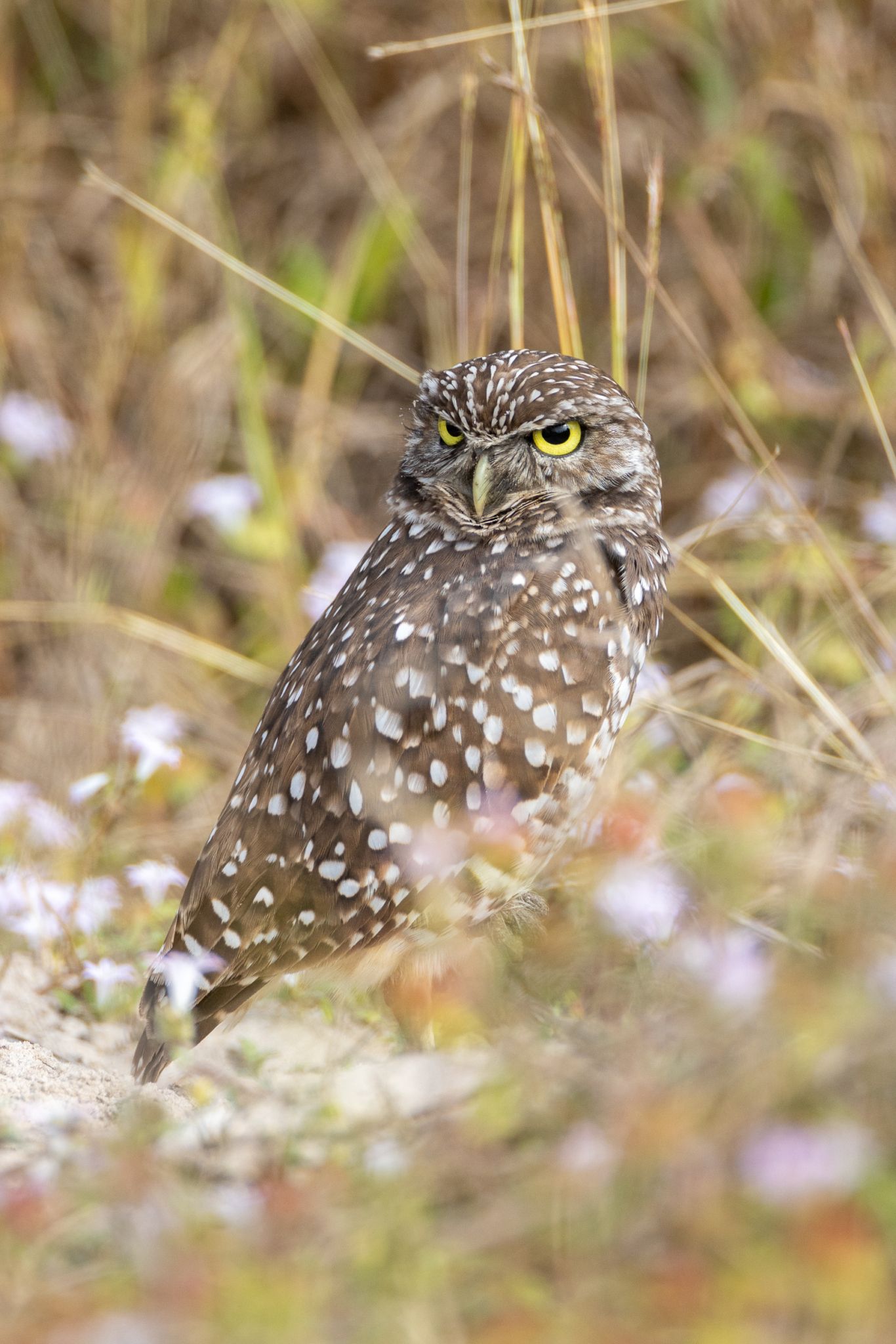
As the week ensues, the trips are punctuated with nearly constant action. Even when we are near our lodging on Marco Island, we have the opportunity to photograph burrowing owls, gopher tortoises, and a variety of wading birds along an inland lagoon.
Towards the end of the week, we relocate over to the southeast side of the Everglades. We head across the Tamiami Trail towards Florida City. Along the way, we look for alligators and birds in which to photograph. Although the drive is some distance, we arrive in Homestead, Florida for lunch just after noon and eat at the locally famous Robert is Here fruit stand and sandwich shop.
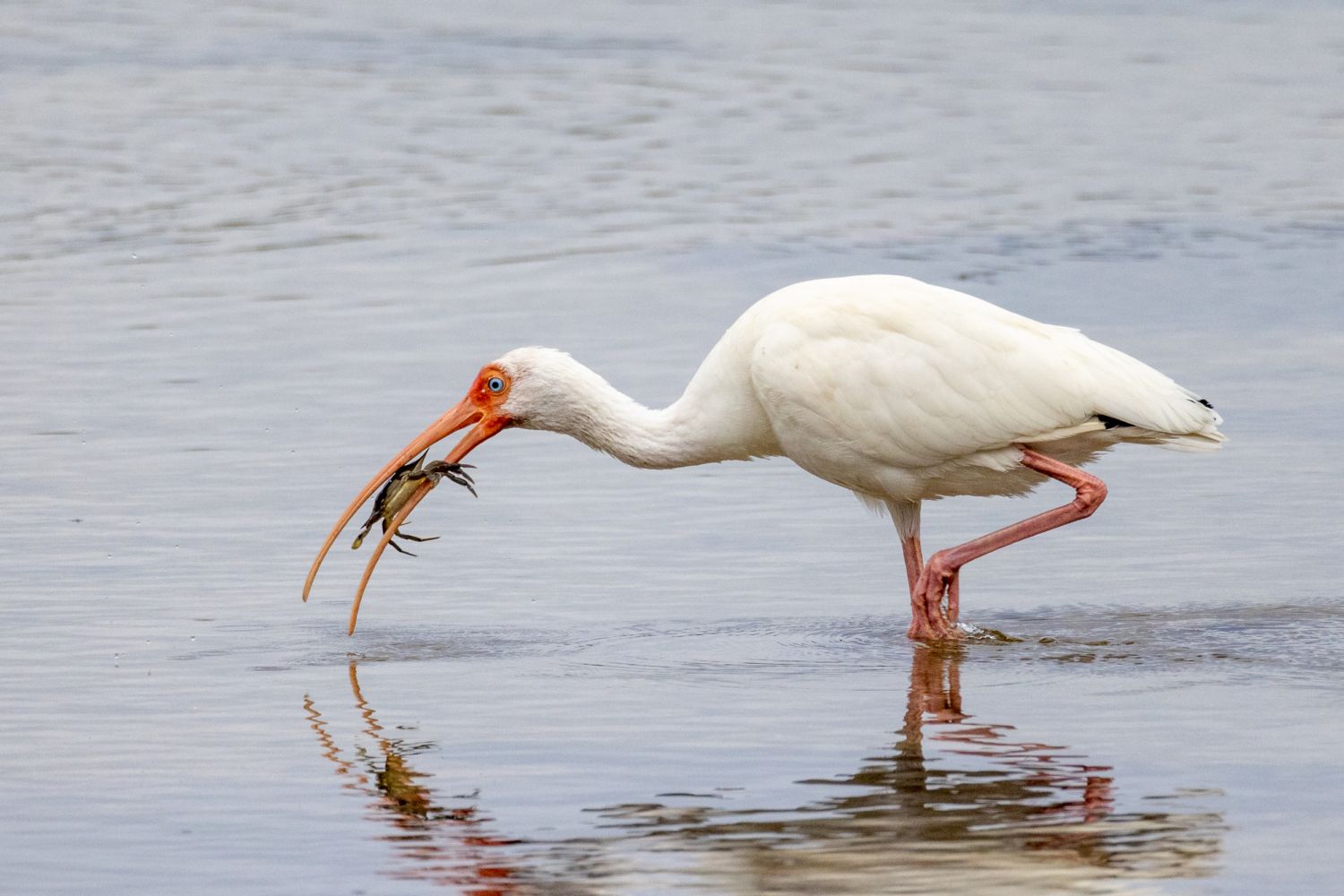
We eat, check in to the hotel, and at about 2 pm, we head out for an evening shoot. Our destination is the famous Anhinga Trail. Listed on the United States National Register of Historic Places, the trail is a must-see location in Everglades National Park. While the trail is short (less than half a mile long), the fresh-water wetland is full of animals. Along our hike, we see great blue herons, green herons, alligators, and a host of other avian species on the trail. While we visit, each guest explores the trail on their own as the area is target-rich.

The last half of the week is in a different part of the park that’s home to even more species of wildlife. The Flamingo area of the park, while devoid of flamingos, is the only place in the United States where alligators and crocodiles share the same habitat. Luckily we catch a glimpse of a pair of crocodiles exactly where I expect them to be.
On our driving wildlife safari on the way out of the park, we spot several species that we stop to photograph. A red-shouldered hawk poses in perfect light on a dead tree and down the road, we see a wood stork wading in the sawgrass. All week long, the photo opportunities were nearly endless.
On the last day of the trip, we make the drive back towards the airport but stop at a place to photograph more birds. Alligators are present and a variety of wading birds flit about the marshland. I stand reflecting on the winter’s trips here to this magical area and in the tree next to me, a new bird appears. I photograph it and make a note of the species. Before we load the van one last time, I make a final count: eighty-two species of birds and wildlife photographed. When I combine the total with other species of wildlife we saw on earlier trips this season, the number rises to nearly 100 species.
Not a bad take for a week’s work.
![]()
![]()
![]()
![]()
![]()
![]()
![]()
![]()
![]()
![]()
![]()
![]()
![]()
![]()
![]()
![]()
![]()
![]()

